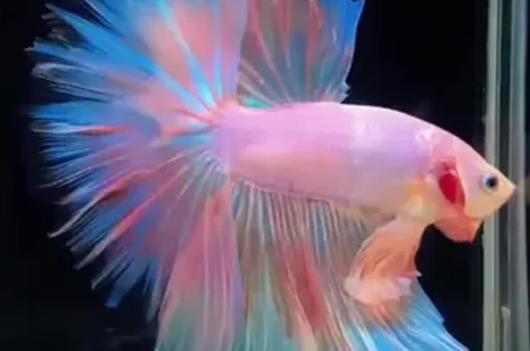Here’s a detailed guide to betta fish care, compiled from multiple reliable sources:

I. Basic Environmental Setup
Container Selection
Opt for a glass cube tank of at least 20×15cm. Avoid plastic or acrylic tanks, as the adhesives used in them may contain toxins. A lid is a must to prevent jumping—betta fish are prone to leaping out of the water when startled.
Water Quality Management
Keep the water temperature between 24–28°C (a heating mat or heater is needed in winter). Use tap water that has been left to sit for 24 hours or exposed to direct sunlight for 4 hours. When changing water, ensure the temperature difference between the new and old water is no more than 1°C. It’s recommended to replace 1/3 of the water weekly; for small containers like block tanks, water should be changed every 2 days.
Environment Arrangement
A bare tank is ideal. You can add almond leaves (4–5cm² per 20cm tank) to adjust the pH level. Floating plants such as duckweed and pothos can be added to provide shelter. Avoid direct strong light.
II. Feeding Tips
Feed Selection
Prioritize live food (like bloodworms and brine shrimp) to enhance color, or high-protein floating feed. For pellet feeds such as Hikari C1, 10–15 pellets (0.6mm size) per day are recommended.
Feeding Techniques
Stop feeding when you notice the fish’s belly is slightly swollen—overfeeding can easily lead to swim bladder issues. Avoid feeding 12 hours before and after water changes to prevent gastrointestinal stress.
III. Health Maintenance
Common Disease Treatment
Fin rot/burn: Perform a 24-hour methylene blue bath in the dark and fast the fish for 3 days.
Saprolegniasis (water mold): Raise the water temperature to 30°C and add a 0.3% salt bath.
Daily Observation
A healthy betta should be active and display its fins regularly. Frequent bubble-blowing is likely a courtship behavior. Normal feces should be intact and 条状 (string-like); loose feces mean you need to adjust the feeding amount.
IV. Special Considerations
Solitary Housing Principle
Male bettas must be kept alone. If keeping female bettas in a group, there should be at least 5 to disperse aggression. You can use a mirror daily to stimulate their fighting instinct, but each session should not exceed 30 minutes.
Breeding Period Management
When the male betta is blowing bubbles to build a nest, provide a calm water environment. Remove the female immediately after she lays eggs.
Key Tip: Avoid frequent disturbances to the tank. A stable environment is more important than over-intervention. If abnormalities occur, it’s advisable to observe for 24 hours first before taking gentle measures.
